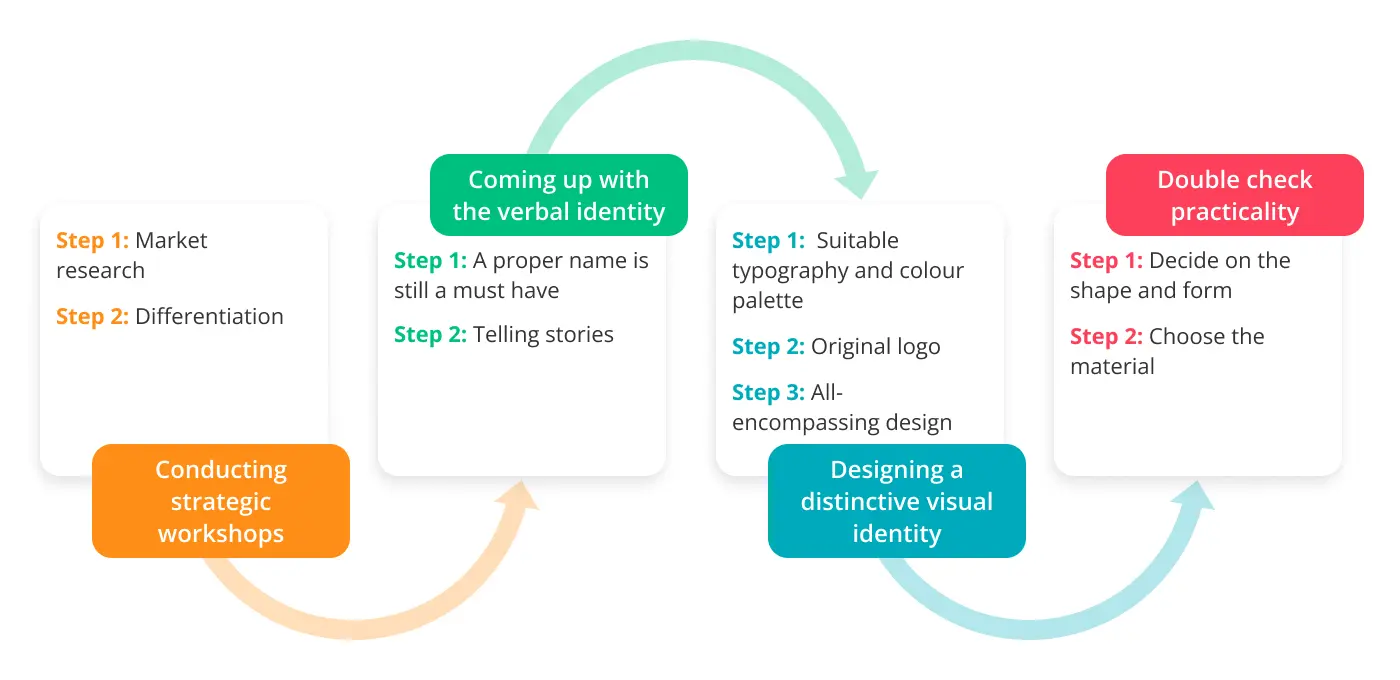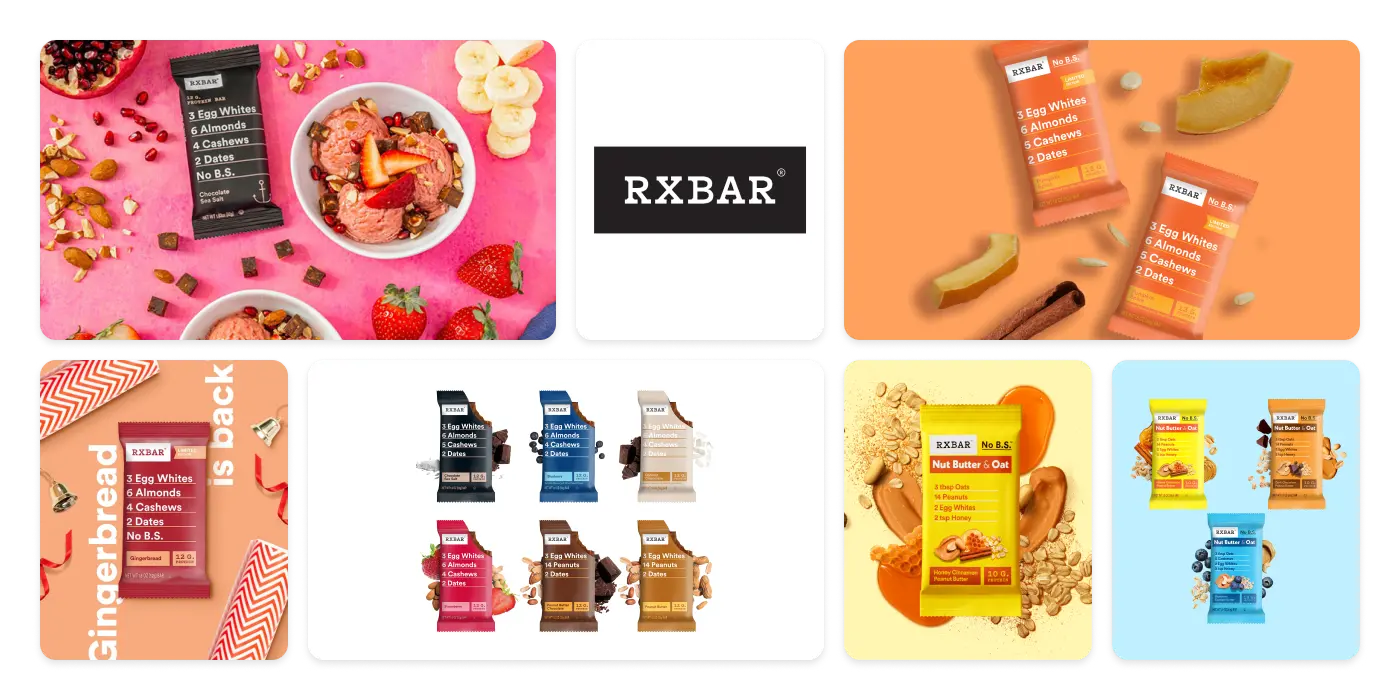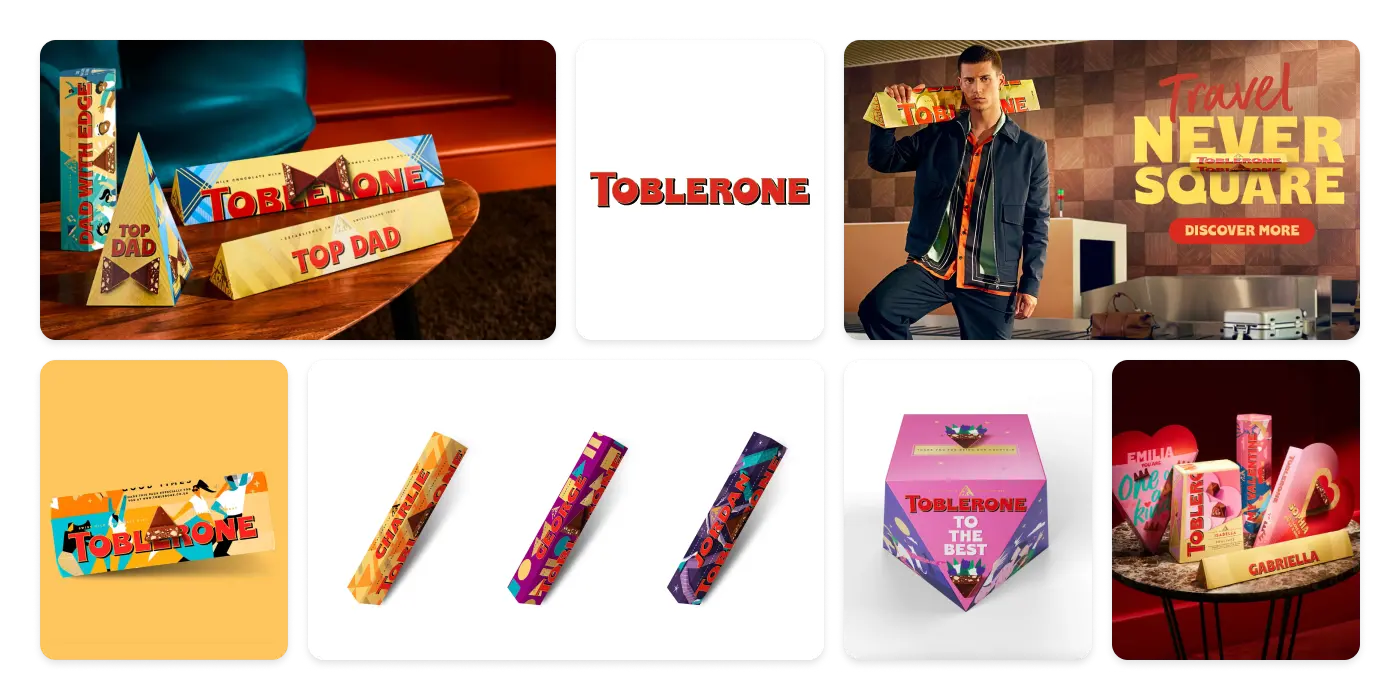
Food Packaging Branding: All-In Look-See
The importance of food packaging branding is undeniable, since the outcomes of the revamp can be in the form of exceptional wrapping that is a work of art, highly complementing what you sell. In this article our reviewer collected the crux of the matter you need to be aware of revamping your covers – the roadmap of how to make it effective, mistakes to avoid and a few very good examples that could bring you some ideas.
Find out everything about food branding & packaging and how to significantly improve your assets. Attachment and support of customers come from your commitment to the minor particulars that enable their positive experience!
What is food packaging branding?
Packaging revamp for food brands is a process of differentiation of your products in the market in order to make them more appealing and distinctive in the eyes of your customers. Food branding and packaging suits a bigger purpose than just protecting the goods from damage but are irreplaceable for your products if you want them to appeal to people and be:

- Another way of promotion – they are first what customers find out about your products and with the right as rain messaging, it can be beneficial even if you don’t launch very expensive marketing program;
- Booster of recognition – being presented on the shelves in the shops people visit everyday, the right packaging draw attention and stimulate sellings;
- Better experience – for a customer, every aspect of a product is the heart and soul, especially user-friendly packaging;
- Spotlighters of your brand’s values – the cover of your products will strengthen your effort of sharing with your audience your beliefs and hopes.
Individualising your packaging can be a solo service to apply, that will make your products unique or a part of an entire branding package that is intended to change the entire image of your company.
How to make branding for food packaging?
The formula of the perfect packaging for your goods lies in a combination of elements that in their harmony creates a distinctive brand experience.

To form an exclusive and original packaging that doesn’t repeat competitors and successfully meets customers’ expectations, you need to pull out all the stops of creative and strategic sides of branding.
Every phase of originating the covers of your products is of a great importance and must be done properly to hit it big. Let’s look closer at the roadmap of advancing packaging to know what to expect.
Conducting strategic workshops
Without a clear understanding of your audience and comprehending who your competitors are, it’s difficult to know what the situation in the market is. It’s a complex work that includes stages like:
Step 1: Market research – through this stage you get familiar with people who buy your goods. Not only their gender or age, but the bigger picture with inclusion of the information like why they buy your goods, what they like and what emotions your offerings recall in them.
Step 2: Differentiation – possessing the far-reaching knowledge about the market, it’s time to define the key distinctive elements of your products so they could be turned into words or imagery and give customers a quick response why they should choose exactly your goods.
Coming up with the verbal identity
Don’t limit your imagination only to the name when branding food packaging, because if you explore some wrappings of successful food products, you’ll see that even on minimalistic ones there is usually more than just a title. Read the components of verbal descriptions that should be on the covering:
Step 1: A proper name is still a must have. The wrong choice will lead to people turning blind to your products or it won’t be memorable enough. The variations of possible options to consider the name are numerous – it can be something important for you or a made up word so it will be associated with your products solely. Kosuke Motoki from The University of Tokyo concluded that the length of the name influences the perception of people as well.
Step 2: Telling stories – with only one tagline or motto, supplemented with a purposeful design, your food packaging design will present people with remarkable stories and facilitate causing the emotion you would like your customers to experience.
Designing a distinctive visual identity
Being put together, the right pieces of visual identity will come to the aid of storytelling, so your packaging will promote your goods’ values as effectively as a marketing program. It consists of a few elements that should be designed, approaching every stage attentively:
Step 1: Suitable typography and colour palette – such light components are major matters in securing certain moods for your offerings. With a selected tone and colours you can appeal to different categories of customers – adults, children, students and so on.
Step 2: Original logo – it can be a separate picture or a stiled word for a series of products or your company’s logo attached to the design – depending on your goals.
Step 3: All-encompassing design – blending the other elements together to create a consistent picture that will enable your design food packaging efficiency.
Double check practicality
Ascertaining the following the main function of packaging – its protecting capabilities and convenience of using is the task that should be approached responsibly. Before making the final decision, we recommend testing a prototype with the help of a group of people to ensure the high quality of your cover. Yet, before the monitoring indicators, it’s vital to:
Step 1: Decide on the shape and form – in relation to the structure of your packaging, there are various options, including experimental ones. Determining its format, come out of the usability.
Step 2: Choose the material for branding food packaging – whether you sell liquid or solid foods, the variety of alternatives is unimaginable, along with the decisions you need to make. First of all, you need to settle how long it serves – for a short period of time or longer, should it be reusable or recyclable and quantity of layers.
Having all the questions answered, you get a stable packaging that will enhance your business’s image and be of service for your customers.
What to avoid in food packaging design?
Designing layouts of wrapping by yourself or entrusting this mission to brand design experts who think outside the box, you can get the-state-of-art imagery that will be met with praise and possess its place in the market. However, on this way to your breakthrough, it’s wise to study what things are better to abstain from, so nothing will shake the acceptance of your products.

Let’s look at several common mistakes done while creating packaging with advice to prevent their appearance:
Misaligning designs with the brand purposes
Some producers, overlooking their brand values and missions, invest in wrapping that doesn’t go well with what they try to promote. If you stand for sustainability, there shouldn’t be too much plastic and waste in your packaging because for buyers who really care about it that won’t be sincere. Evaluating food packaging design ideas, you need firstly decide whether they really fit your products and will complement them instead of covering them from potential customers.
Advice to follow: To be eye-catching and memorable, your brand should be consistent through all its essential elements, including packaging design.
Over aesthetic
Attractiveness is an undoubtedly vital point when it comes to creating packaging. Yet, be cautious, choosing materials and forms because it’s easy to overdo things trying to reach perfection. People in the shops will probably pay attention to your bottles and boxes if they are ethereal and even buy them, but if using your products they will find them very difficult to manage, next time they’ll select something not as elegant yet practical.
Advice to follow: Appealing yet functional, especially if it’s used in daily life – is the key! There are many creative ways to make your wrapping bright without sacrificing customers’ comfort. Haven’t you experienced it by yourself?
Too much packaging
Sometimes it’s difficult to understand what the product is because of excessive wrapping. The attempts to satisfy your clients with additional plastic or paper don’t lead to the desirable growth of loyalty and only require more expenses on resources. Especially, it’s related to the kind of goods which packaging is usually thrown away after usage and with branding organic food packaging it’s mostly like this.
Advice to follow: So, choosing packaging for food, look closely at what you really need, particularly to follow new EU rules.
Where is the main point?
Maybe you have faced some lemonade or sweets packaging that is so disharmonious that doesn’t evoke curiosity, even though inside of the wrapping it might be really something nice. Every cover should have some central elements that are easy to remember and catch the eye.
Advice to follow: Choose something that is worth putting it in the front, but try not to make too many centres, together they might not work.
Overlooking customers
Relying exclusively on your point of view or even having shown the results to employees, you can’t be sure if the packaging really is captivating and is capable of grabbing the needed attention. It’s vital for every business to focus on what their customers have in mind about their products, whether they wish to obtain them and what will make their experience unforgettable. Expecting great results, you need to get to know your audience first to be successful.
Advice to follow: Studying customers’ preferences and demands will save a lot of time and attempts through the process of trials and errors. It’s a safe play game to entrust this difficult task to the professionals who offer brand consulting.
The best examples of food branding and packaging
It’s difficult to come to a conclusion without evaluating some good examples. We collected a few fascinating ideas that have been implemented by various companies and became very successful. Glance at them and find our some common patterns:
Gerber. One of the most iconic baby food branding and packaging stories has been ever told. The company was founded in 1927 and since then has grown to sell their goods in more than 80 countries. For a large course of years, the main attributes that serve for the company’s packaging recognition are a logo with a smiling baby, bright colour palette that sets the mood of family warmth and playful fonts.

Gerber supports global initiatives of sustainability, stating on their bottles, jars and lids important messages about recycling. The producer has a program that is aimed at reusing their packaging in another way. To make this conscious choice, you need to collect their jars and lids, register in the program and send covers to Gerber. Apart from pursuing the path of awareness, they highlight the naturality of their products, leaving the marks like “organic”, “natural”.
RXBAR. The trendy and premium packaging of the recent days doesn’t scream about its weight through a complex design with a plenty of symbols, but is presented by the means of simplicity and closeness to straightforwardness. RXBAR sells their products mostly in simple packaging, supplied only with essential information about the components.

Amongst all packaging ideas for food, RXBAR’s is geniously simple and resonates with customers. Instead of creating tangled concepts, they turn to clear facts as their main promoters and accenting excluding any added sugar or flavour enhancers.
SmartWater. The simplicity of bottles of SmartWater, that is owned by Coca-Cola, is its key advantage. Everything, starting from the shape of the bottle, its transparency to design and typography gives a customer clear understanding of its purity. This brand’s story developed on the unique approach the producer relies on – a special way of distillation that requires removing all the impurities and adding minerals that elevate its refreshing value.

Even when additional flavours are added to the water, the food branding & packaging hardly changes – a round circle is attached to the classic drop design and the main element that informs us about the taste of the water is the text explanation. To promote the drink, the company throughout the years has hired actresses famous worldwide – Jennifer Aniston, Gal Gadot and Zendaya.
Toblerone. In Toblerone, we can see everything – a genius naming approach – the chocolate took its name after Theodor Tobler, one of the founders of the factory, a bit transformed so it evokes interest. Another distinctive detail is a logo-puzzle that depicts the Matterhorn mountain, with a bear hidden in there.

Yet, there are even more special details about their food branding ideas. The most noticeable part of the wrapping is, of course, its form. Unlike any other chocolate, Toblerone is packed in a triangle carton box that draws attention when it is seen on the shelves and sticks to the memory so you don’t need to see it ten times before memorising it. At the same time, the other elements – colours, visual components are simple, so it looks original and stylish.
Does your packaging need to be advanced?
As you now know, the proper packaging for goods serves many purposes such as raising awareness and recognition and using it for your benefit will help you make a name for yourself. Yet, it’s also important to find a vendor of innovative services that will be capable of turning your ideas into reality and choose a solution that will contribute to achieving the revenue you expect.
In order to make the search easier that it could be, we are here to offer you help in going through these trenches. You need only to write the budget and describe your project and we’ll find a vendor that hits the marks. Are you interested in striking out in a new direction? To reach us, use this form and prepare to make your packaging take the breath away of your customers!

